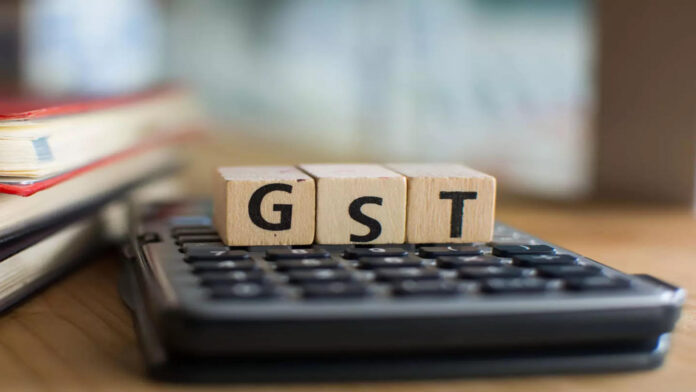GST Overhaul: Luxury Goods and Services to Face 28% Tax Hike, Essential Items Unaffected
The Goods and Services Tax (GST) Council in India is considering a significant overhaul of its tax structure, with a focus on luxury goods and services. This move, spearheaded by a Group of Ministers (GoM) within the Council, could see the GST rate hiked to 28% for a wide range of items that are currently taxed at lower rates of 18% or 12%. This proposed revision would particularly impact high-end goods and services, such as luxury handbags, spa treatments, cosmetic procedures, and even premium stationery.
The overhaul is being driven by the GoM, which is led by Bihar’s Deputy Chief Minister, Samrat Chaudhary. The group is expected to reconvene before submitting its final recommendations in November 2024. The revision of tax rates comes as part of a broader effort to redefine what constitutes a luxury item in today’s market and align taxation accordingly. By targeting luxury goods and services, the government aims to increase GST revenue without burdening essential items that affect the general population.
Increased Taxation on Luxury Goods and Services
One of the most notable sectors that may face a steep rise in GST is the luxury wellness and beauty industry. High-end spa treatments, cosmetic procedures such as Botox, and premium salon services are some of the services that could see their GST rates jump to 28%. These services, typically considered discretionary and non-essential, have been on the government’s radar for some time, as they often attract affluent consumers. Luxury cosmetic procedures are already perceived as exclusive, and an increased tax could further elevate their costs, making them accessible only to a more elite segment of society.
In addition to spa treatments and cosmetic services, luxury handbags, sunglasses, and aesthetic treatments are likely to be affected. The proposed changes would also impact premium stationery, with items like pens priced above ₹5,000 potentially falling under the 28% GST bracket. Even high-end bicycles, those priced above ₹50,000, could be affected by the proposed tax revisions. Cufflinks and other accessories priced above a certain threshold are also under scrutiny, as the GoM seeks to categorize and tax items based on their luxury status.
Redefining Luxury: Categorization and Phased Implementation
The revision of GST rates is not just about increasing taxes but also about redefining what constitutes a luxury item. The GoM is advocating for a phased implementation of these changes, which would allow businesses and consumers to adjust gradually. Approximately 10% of items currently taxed at 18% could be shifted to the 28% rate, while 5% of items in the 12% slab may also be moved to the higher tax bracket. These decisions will be based on recommendations from the fitment committee, which will set sale price thresholds to differentiate luxury goods from other categories.
This phased approach is seen as a way to ensure that the changes are manageable for both businesses and consumers, particularly as the economy recovers from the effects of the pandemic. It also allows time for a thorough review of item categorization, ensuring that only true luxury items are taxed at the higher rate. The redefinition of luxury goods involves more than just price considerations. The GoM has recommended that an officials’ committee further scrutinize these products to determine their categorization and price limits for higher taxation.
Protecting Essential Goods
While the proposed changes will affect high-end goods and services, essential items for the common man are expected to remain unaffected. The government has made it clear that the aim of this tax overhaul is to target luxury products that currently fall into lower tax brackets. Goods and services deemed essential for daily living, or those that cater to the general population, will not see any changes in their GST rates. This decision has been made to ensure that the proposed tax adjustments do not create an additional financial burden on average consumers.
This review of the GST structure is part of a broader strategy to boost tax revenue without adversely affecting the broader economy. By focusing on luxury items, the government aims to raise revenue from those who can afford to pay higher taxes, while keeping essential goods and services affordable for the average citizen.
The Financial Impact of the Proposed Changes
While the proposed changes are designed to target luxury goods, the financial impact of the GST overhaul is still uncertain. Officials have indicated that it is too early to predict the exact revenue boost that the new tax rates might bring. However, there is potential for a significant increase in GST collections if a larger portion of goods and services are shifted to the 28% tax slab.
Critics of the tax hike have raised concerns about its potential impact on consumer behavior. Luxury goods, by their nature, are price-sensitive, and increasing their cost through higher taxation could lead to reduced demand. For businesses operating in the luxury sector, these tax hikes might require adjustments to pricing strategies or marketing efforts to maintain customer interest. Additionally, the changes could also impact the global perception of India’s luxury market, potentially deterring international brands from expanding their operations in the country.
Conclusion
The proposed GST hike marks a significant step in the Indian government’s ongoing efforts to increase revenue while redefining the taxation of luxury goods and services. By targeting high-end items such as luxury handbags, spa treatments, cosmetic procedures, and premium stationery, the government aims to create a more equitable tax system that places the burden on those who can afford to pay more.
With a phased implementation and careful categorization of luxury goods, the government hopes to minimize disruption to businesses and consumers while maximizing revenue. Although essential goods will remain unaffected, the increased cost of luxury items could have a noticeable impact on India’s affluent consumers. As the GoM continues its deliberations and prepares to submit its recommendations, the full impact of the GST overhaul will become clearer, shaping the future of India’s luxury market.

